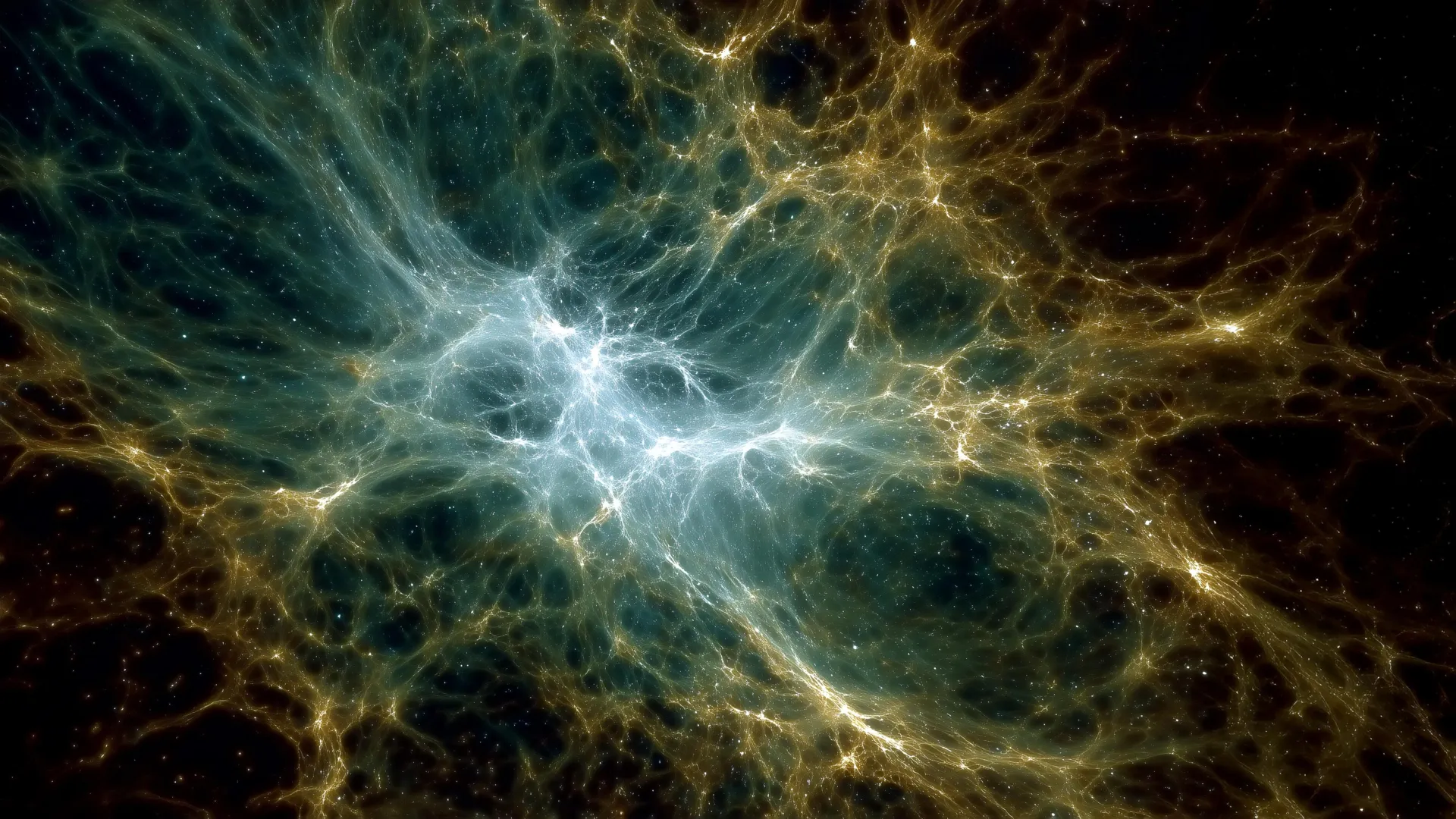Dark energy might be changing and so is the Universe
Dark energy may be alive and changing, reshaping the cosmos in ways we’re only beginning to uncover.
- Date:
- November 9, 2025
- Source:
- Chiba University
- Summary:
- New supercomputer simulations hint that dark energy might be dynamic, not constant, subtly reshaping the Universe’s structure. The findings align with recent DESI observations, offering the strongest evidence yet for an evolving cosmic force.
- Share:

Since the early 20th century, scientists have gathered convincing evidence that the Universe is expanding -- and that this expansion is accelerating. The force responsible for this acceleration is called dark energy, a mysterious property of spacetime thought to push galaxies apart. For decades, the prevailing cosmological model, known as Lambda Cold Dark Matter (ΛCDM), has assumed that dark energy remains constant throughout cosmic history. This simple but powerful assumption has been the foundation of modern cosmology. Yet, it leaves one key question unresolved: what if dark energy changes over time instead of remaining fixed?
Recent observations have started to challenge this long-held view. Data from the Dark Energy Spectroscopic Instrument (DESI) -- an advanced project that maps the distribution of galaxies across the Universe -- suggests the possibility of a dynamic dark energy (DDE) component. Such a finding would mark a significant shift from the standard ΛCDM model. While this points to a more intricate and evolving cosmic story, it also exposes a major gap in understanding: how a time-dependent dark energy might shape the formation and growth of cosmic structures remains unclear.
Simulating an Evolving Universe
To explore this mystery, a team led by Associate Professor Tomoaki Ishiyama of Chiba University's Digital Transformation Enhancement Council in Japan carried out one of the most extensive cosmological simulations ever performed. Collaborators included Francisco Prada of the Instituto de Astrofísica de Andalucía in Spain and Anatoly A. Klypin of New Mexico State University in the United States. Their study, published in Physical Review D (Volume 112, Issue 4), investigated how a time-varying dark energy could influence the evolution of the cosmos and help interpret future astronomical observations.
Using Japan's flagship supercomputer, Fugaku, the researchers executed three large, high-resolution N-body simulations, each with a computational volume eight times greater than previous work. One simulation followed the standard Planck-2018 ΛCDM model, while two others incorporated dynamic dark energy. By comparing the DDE model with fixed parameters to the standard model, they were able to isolate the effects of a changing dark energy component. A third simulation used parameters drawn from DESI's first-year data, revealing how an "updated" cosmological model might behave if dark energy truly varies with time.
How a Small Change Can Reshape the Universe
The results showed that the influence of dark energy variations alone was relatively subtle. However, once the researchers adjusted the cosmological parameters in line with DESI data -- particularly increasing the matter density by about 10% -- the differences became striking. A higher matter density strengthens gravitational attraction, which accelerates the formation of massive clusters of galaxies. In this scenario, the DESI-based DDE model predicted as much as 70% more massive clusters in the early Universe than the standard model. These clusters form the cosmic framework on which galaxies and galaxy groups assemble.
The team also examined baryonic acoustic oscillations (BAOs) -- patterns left behind by sound waves in the early Universe that serve as "cosmic rulers" for measuring distances. In the DESI-derived DDE simulation, the BAO peak shifted by 3.71% toward smaller scales, closely matching DESI's actual observations. This strong agreement confirmed that the model not only reflects theoretical predictions but also aligns well with real-world data.
Mapping Galaxy Clusters and Cosmic Structure
In addition, the researchers analyzed how galaxies cluster throughout the cosmos. The DESI-based DDE model produced noticeably stronger clustering than the standard ΛCDM version, particularly on smaller scales. The enhanced clustering directly results from the higher matter density, which amplifies gravitational binding. This close match between simulation and observation further supports the validity of the dynamic dark energy model.
Overall, the team's findings clarify how both dark energy and matter density shape the large-scale structure of the Universe. "Our large simulations demonstrate that variations in cosmological parameters, particularly the matter density in the Universe, have a greater influence on structure formation than the DDE component alone," says Dr. Ishiyama.
Preparing for the Next Generation of Cosmic Surveys
With new observational campaigns on the horizon, these simulations will play a crucial role in interpreting upcoming results. "In the near future, large-scale galaxy surveys from the Subaru Prime Focus Spectrograph and DESI are expected to significantly improve measurements of cosmological parameters. This study provides a theoretical basis for interpreting such upcoming data," concludes Dr. Ishiyama.
Story Source:
Materials provided by Chiba University. Note: Content may be edited for style and length.
Journal Reference:
- Tomoaki Ishiyama, Francisco Prada, Anatoly A. Klypin. Evolution of clustering in cosmological models with time-varying dark energy. Physical Review D, 2025; 112 (4) DOI: 10.1103/4k5f-gyrx
Cite This Page: